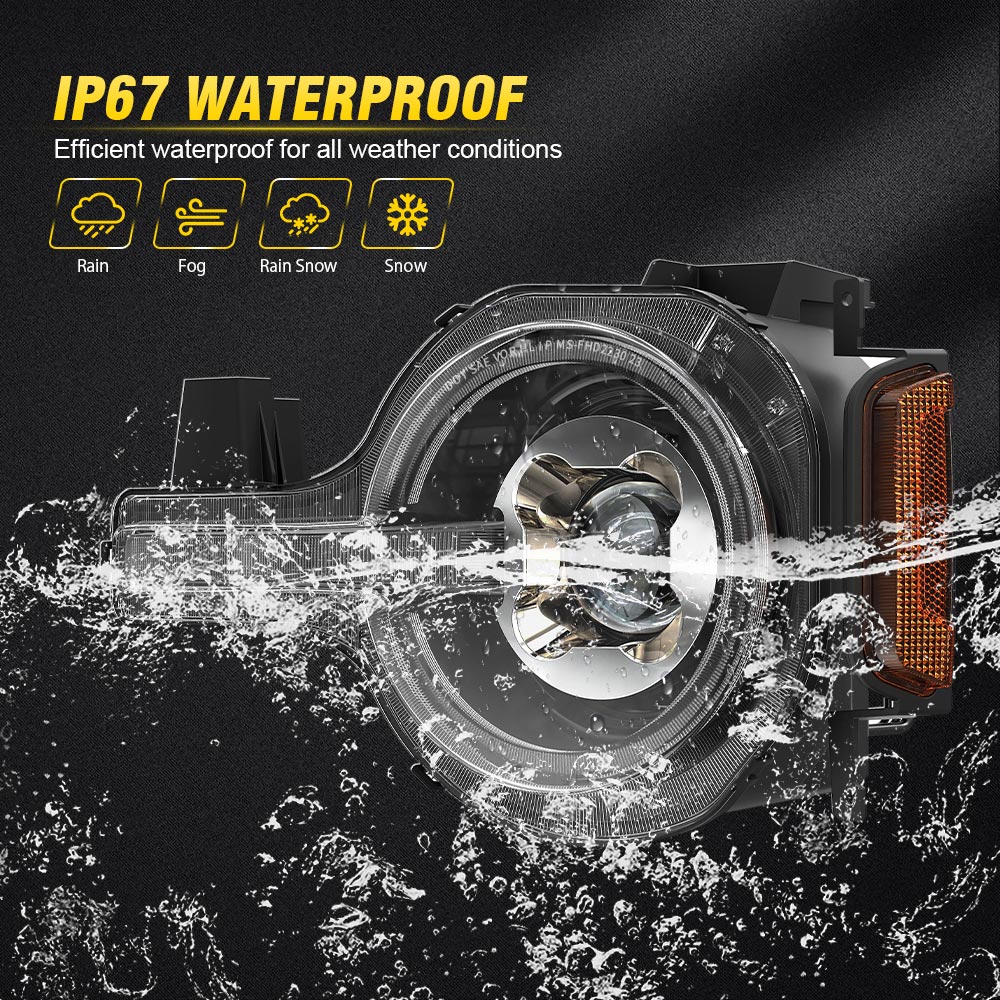The headlights on the market today are mainly divided into three types: halogen lamps, xenon lamps and LED headlights. What is the difference between these three types? Let's talk about it: Generally speaking, when the car is shipped from the factory, it is equipped with the original car halogen bulb, which is usually 55W. The brightness of this bulb is generally acceptable in urban areas, but some requirements are higher, or high speed, and some riders feel that the brightness is not enough.
The principle of a halogen lamp is to inject a halogen gas such as iodine or bromine into the bulb. At a high temperature, the sublimated tungsten wire chemically reacts with the halogen, and the cooled tungsten re-solidifies on the tungsten wire to form a balanced cycle, avoiding the tungsten wire. Premature rupture. Therefore halogen bulbs are longer than incandescent lamps.
The halogen lamp supply voltage is usually divided into AC 220V and DC 12V, 24V.
The halogen lamp is an improvement of the incandescent lamp, which maintains the advantages of the incandescent lamp: simple, low cost, easy adjustment and control of brightness, and good color rendering (Ra = 100). At the same time, halogen lamps overcome many of the disadvantages of incandescent lamps: short life and low luminous efficiency (generally only 6% to 10% can be converted to light energy, while the rest are lost in the form of heat).
Xenon headlights are currently the form of lights commonly used in mid- to high-end cars. Because of the high brightness of xenon lamps, they are usually equipped with lenses, and the light emitted is very focused, so they are loved by everyone, and the color is also compared. Unlike ordinary halogen lamps, the light is white.
Xenon lamps are irritated by high-voltage currents, so they have a longer life and better energy savings than halogen lamps. And the brightness is greatly improved by 300% compared to the halogen lamp. However, due to the higher technology, the cost of production is much more expensive than that of halogen lamps. But its brightness still makes many people like it.
Before the LED headlights did not come out, people used xenon lamps, which was a last resort. The temperature of the xenon lamp was very high, 300-400 degrees. The lamp holder was baked, and the lampshade was baked yellow, and it was very Power consumption. Everyone should know that the Xenon lamp raises the original 12V voltage to 23000V through the ballast and then excites the arc. It is also known how much energy is needed to raise the 12V to 23000V. Therefore, especially when the Xenon lamp is activated, the pressure on the battery. Very very big. This is also the reason why the xenon lamp has a delay, and it cannot be fully lit when it is powered on. Because the voltage is raised in a process, it can only be slowly turned on after being energized.
Nowadays, many car owners have converted the lights into xenon lights. This is the formation of many high-light dogs. I hope that everyone can use the lights reasonably for the safety of you and others.
The temperature of the LED headlights is very low, that is, 50-70 degrees, and it is instantaneously activated, and the power is turned on immediately. Now people change the lights, they all use LED headlights. Bright and power saving is the most remarkable feature of LED headlights. Just as energy-saving lamps replace incandescent bulbs, it is a trend. Take this time, often the riders got me to call me the "Nine Plus One Car LED Bulb E2", the function is only 33W, much more power than the original car halogen bulb, but the brightness is the original car At least 4 times more halogen bulbs! The LED headlight line is softer, not as dazzling as a xenon lamp, and evenly paving the road, it is not easy to visual fatigue, which is why people change LEDs for lighting now.
Energy saving, environmental protection, durability, small size and instant lighting are all the choices for car headlights. But for now, due to structural and cost constraints, it can only be applied to some high-end cars.
There is also a laser headlight with a higher B-shape. Now the new Audi A8 uses a laser headlight.
Laser headlights have most of the advantages of LED headlights, such as fast response, low brightness attenuation, small size, low energy consumption, long life and so on. Compared to LED headlights, the laser headlights are particularly advantageous in terms of volume. The length of a single laser diode component can already be 10 microns, which is only 1/100 of the size of a conventional LED component. This means that as long as the designer is willing, the tradition The size of the car's headlights can be greatly reduced, which may revolutionize the design of the various elements on the front of the car.
Another significant advantage of laser headlights is that in terms of luminous efficiency, for example, the luminous efficiency of general LED lighting can reach about 100 lumens per watt, then the laser diode component can reach about 170 lumens per watt, which means that when the same illumination is met In terms of conditions, the use of laser headlights consumes less than 60% of the LED headlights, further reducing energy consumption and more in line with the future energy saving and environmental protection trends of automobiles.
Like LEDs, laser diodes can only emit monochromatic lasers. They need to be synthesized by multiple monochromatic laser sources, or they can be passed through transparent media such as quartz, resulting in broadening of the spectrum to form white light. BMW used the method commonly used by white LEDs – blue monochromatic light + fluorescent filters to make white light.


